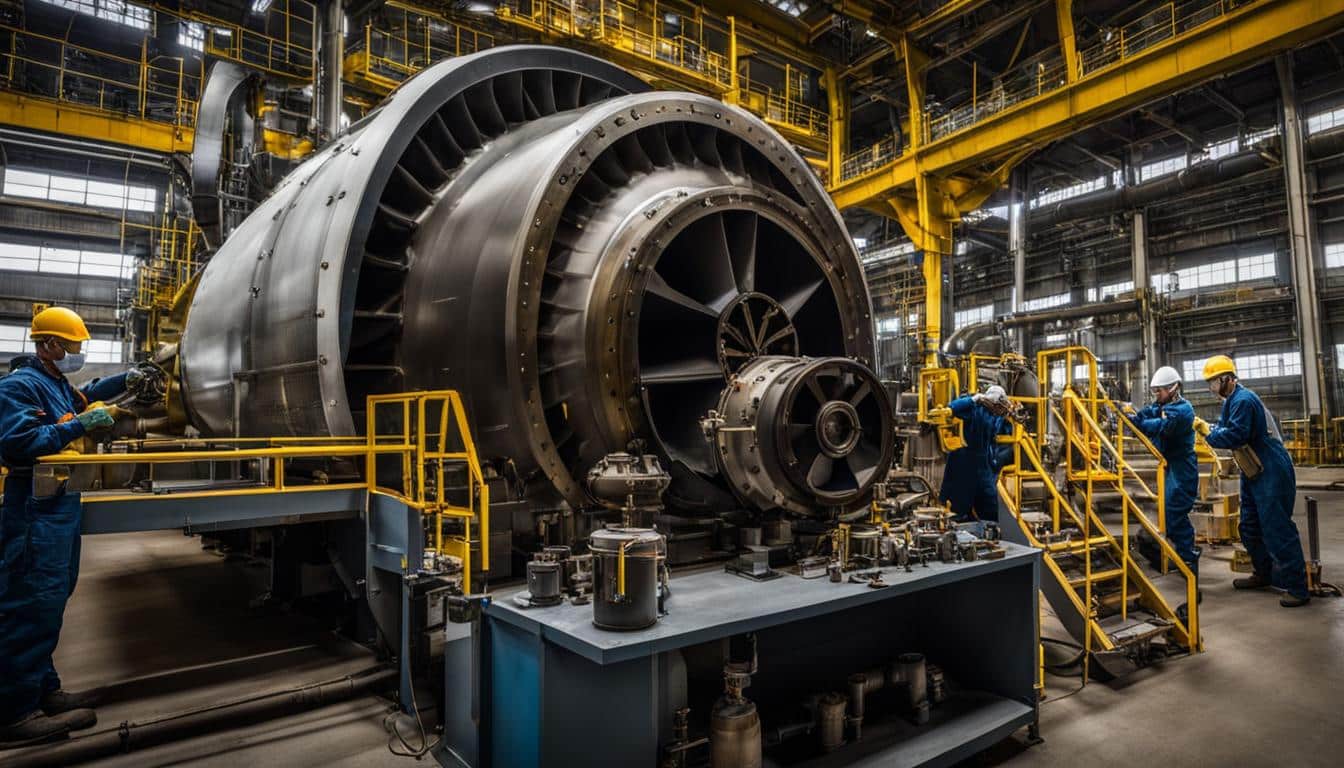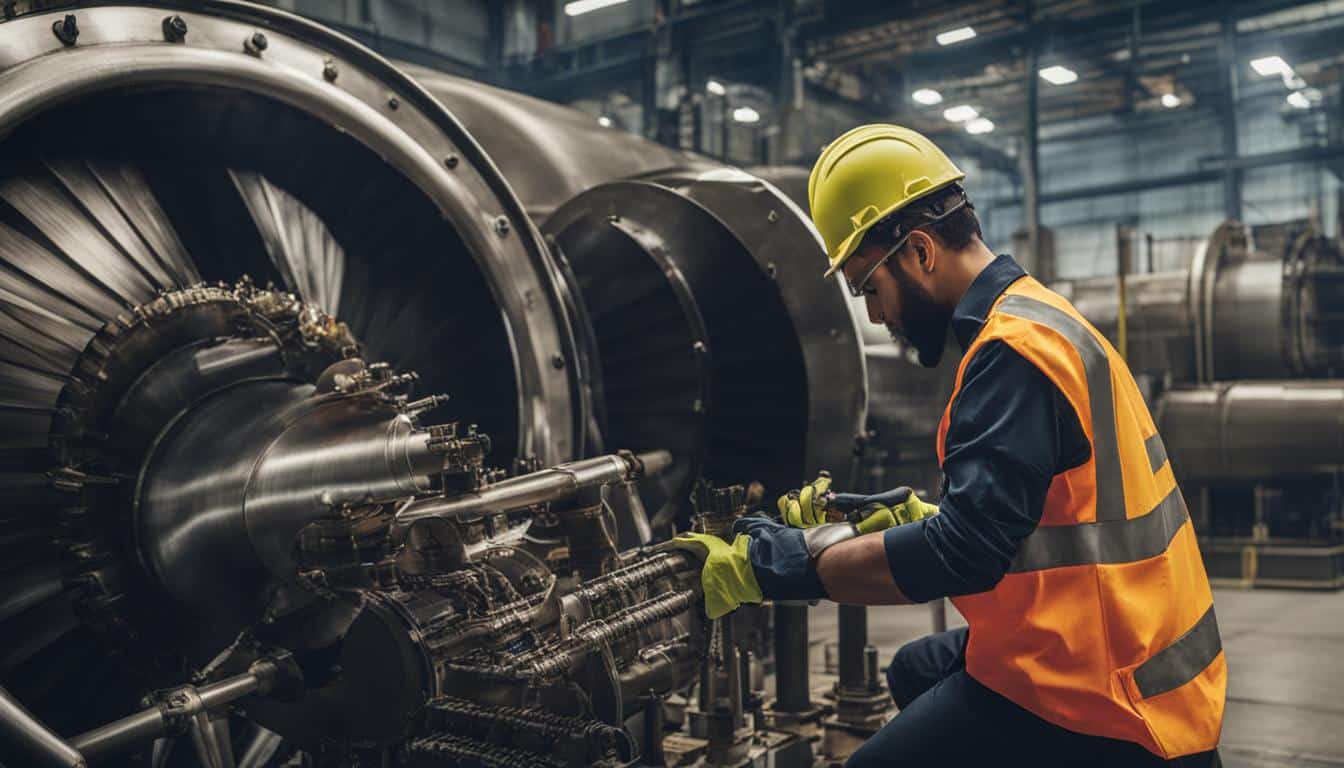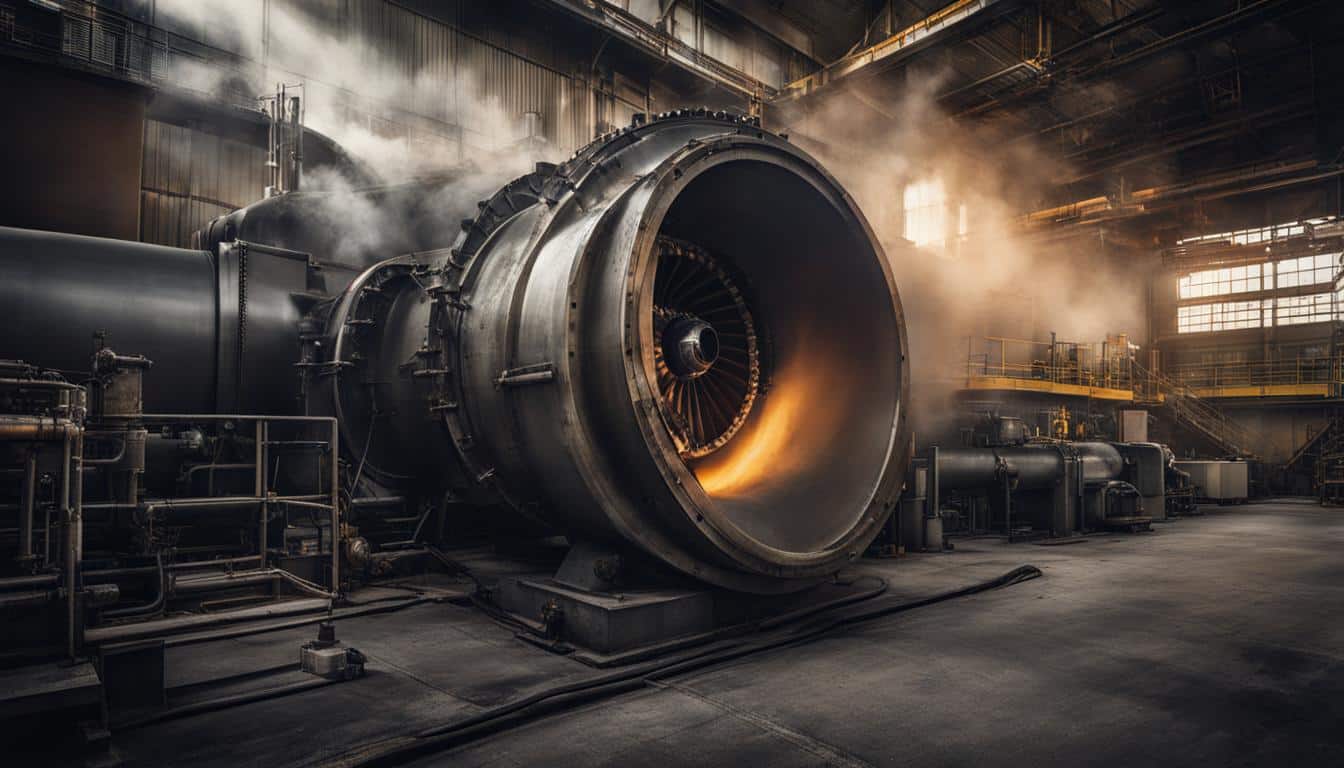In the realm of industrial machinery, steam turbines hold an important position due to their critical role in the energy generation industry. Their unique ability to convert steam energy into mechanical work makes them indispensable in a wide array of industrial applications, from electricity generation to driving large compressors and pumps. This article delves into the significance of these turbines, emphasizing the importance of their maintenance and repair to ensure optimal performance and longevity.
Steam Turbine Basics
Steam turbine generators, at their core, are engines that harness the high-pressure steam generated in boilers to spin a series of blades attached to a rotor. This rotational motion is then converted into useful work or energy. The versatility of steam turbines lies in their ability to handle varying steam pressures and temperatures, making them suitable for a diverse range of industrial settings. Their efficiency and reliability have cemented their status as a backbone in power generation, especially in thermal power plants.
However, the very nature of their operation subjects steam turbines to extreme conditions, such as high temperatures, pressures, and the potential for corrosive environments. These factors can lead to wear and tear, reducing efficiency and potentially leading to costly downtimes. Regular maintenance services and timely steam turbine repairs are thus essential to mitigate these risks. Proper maintenance not only extends the life of the turbine but also ensures it operates at peak efficiency, which is crucial for maintaining the economic viability of the processes they power.
Common Challenges in Steam Turbines
Wear and Tear
Industrial steam turbines, the workhorses of the energy and process industries, are subject to a range of challenges that can impact their efficiency and longevity. One of the most pervasive issues is wear and tear, an inevitable consequence of continuous operation under high-pressure and high-temperature conditions.
Corrosion and Erosion
At the forefront of these challenges are corrosion and erosion. Corrosion, the chemical reaction between the turbine material and its environment, can lead to material degradation and loss of structural integrity. It is often exacerbated in environments with high moisture or corrosive agents. Erosion, on the other hand, results from the physical impact of steam or particles carried by steam on the turbine blades and other components. This continuous bombardment gradually wears down the material, leading to efficiency loss and potential failure.
Vibration Issues
Vibration issues are another significant concern in steam turbine operation. These can stem from a variety of sources, such as imbalances in the rotor, misalignment of components, bearing failures, or even external factors like foundation issues. Excessive vibration not only reduces operational efficiency but also poses a risk to the structural health of the turbine, potentially leading to catastrophic failures.
Steam Leakage
Steam leakage is a more insidious problem, often going unnoticed until it has caused significant damage or efficiency loss. Leakage can occur due to faulty seals, cracks, or other forms of wear and tear in the system. Identifying and addressing steam leakages promptly is crucial to maintain the turbine’s efficiency and to prevent further deterioration of the components.
Each of these challenges – wear and tear, corrosion and erosion, vibration issues, and steam leakage – requires a proactive approach for identification and resolution. Regular inspections, maintenance, and upgrades are essential to mitigate these issues. Addressing them promptly not only ensures the continued efficient operation of the steam turbines but also prolongs their service life, thereby safeguarding the substantial investments they represent.
Diagnostic Approaches To Steam Turbine Maintenance
The health and efficiency of industrial steam turbines hinge on sophisticated diagnostic approaches. These approaches encompass regular inspection techniques and the use of advanced diagnostic tools, ensuring that any potential issues are identified and rectified promptly.
Regular Inspection Techniques
Regular inspections form the bedrock of steam turbine maintenance. These inspections typically involve visual examination, performance monitoring, and routine checks of critical components like blades, bearings, and seals.
Visual inspections can reveal signs of wear, corrosion, or erosion. Performance monitoring, on the other hand, involves assessing parameters like vibration levels, temperature, and pressure, which can indicate underlying problems.
Routine checks are vital for identifying issues like steam leaks or misalignments before they escalate into major failures. These inspections, often conducted during scheduled downtimes, play a crucial role in preventative maintenance, extending the turbine’s operational lifespan.
Advanced Diagnostic Tools and Their Application
To complement regular inspection techniques, the industry has turned towards advanced diagnostic tools. These tools leverage technologies such as vibration analysis, thermography, and ultrasonic testing. Vibration analysis is crucial for detecting imbalances or misalignments in moving parts. By analyzing vibration patterns, technicians can pinpoint specific issues within the turbine.
Thermography, using infrared cameras, helps detect hot spots caused by friction, misalignments, or electrical issues, enabling early intervention. Ultrasonic testing is another powerful tool, particularly in detecting internal cracks or anomalies that aren’t visible to the naked eye. It uses high-frequency sound waves to inspect and measure variations in the material properties of turbine components.
Together, these advanced diagnostic tools offer a more comprehensive and accurate picture of the turbine’s health. Their application allows for early detection of potential issues, facilitating timely repairs and adjustments. This proactive approach not only minimizes downtime but also enhances the overall efficiency and longevity of steam turbines. The integration of these advanced diagnostics into regular maintenance schedules represents a significant stride in the operational management of industrial steam turbine services.
Repair Solutions for Steam Turbines
The longevity and efficiency of industrial steam turbines largely depend on effective repair solutions. These solutions range from comprehensive overhauling to specific repair strategies targeting critical components like blades, valves, sealing systems, and addressing corrosion and erosion damage, along with balancing, alignment corrections, and installations.
Overhauling: A Comprehensive Approach
Overhauling represents a holistic approach to steam turbine maintenance, typically conducted during planned outages. The outage service process involves a thorough inspection and repair of all major components. It includes disassembling the turbine, cleaning all parts, and inspecting them for damage. Worn or damaged parts are either repaired or replaced. Overhaul services are crucial not just for repairing existing issues but also for preempting potential failures. It ensures that the turbine operates at optimal efficiency and reliability, extending its service life.
Blade Repair and Replacement Strategies
Turbine blades are subjected to extreme conditions, making them prone to wear, erosion, and fatigue. Repair strategies for blades often involve detailed inspections to identify any cracks, erosion, or other forms of damage. Depending on the extent of the damage, blades may be repaired onsite using welding and blending techniques, or replaced entirely. Advanced coating technologies can also be applied to protect blades from future wear and erosion.
Sealing System Improvements
The sealing system in steam turbines plays a critical role in maintaining efficiency by preventing steam leakage. Over time, seals can wear out or get damaged, leading to efficiency losses. Repair solutions include replacing or upgrading the seals to newer materials or designs that offer greater durability and better performance. This not only reduces steam leakage but also improves overall turbine efficiency.
Addressing Corrosion and Erosion Damage
Corrosion and erosion are persistent threats to steam turbine components. Repairing such damage involves first cleaning the affected areas, then conducting repairs through welding, coating, or applying protective layers. In cases where damage is extensive, replacing the component might be necessary. Implementing corrosion-resistant materials and coatings can significantly prolong the life of these components.
Balancing and Alignment Corrections
Proper balancing and alignment are critical for the smooth operation of steam turbines. Imbalances and misalignments can cause excessive vibration, leading to rapid wear and potential failure of components. Repair solutions involve conducting precise balancing and alignment procedures. This process typically includes checking and adjusting the rotor and bearings, ensuring that all parts are properly aligned and balanced. This not only reduces wear and tear but also improves the overall performance and efficiency of the turbine.
Preventive Measures and Maintenance
In the world of industrial steam turbines, the adage ‘prevention is better than cure’ rings particularly true. A robust preventive maintenance strategy is essential to ensure the longevity and efficiency of these critical machines. This strategy encompasses various aspects, including the maintenance of lubrication and cooling systems and the upkeep of control systems.
Preventive Maintenance Services: Planning for Longevity
Preventive maintenance involves regularly scheduled checks and interventions designed to prevent failures before they occur. This proactive approach includes inspecting, cleaning, lubricating, and replacing parts as needed. The objective is to maintain the turbine in optimal working condition, thus avoiding unplanned downtimes and costly repairs. Effective preventive maintenance is based on a thorough understanding of the turbine’s operation, as well as its historical performance and potential wear patterns. This approach not only extends the lifespan of the turbine but also ensures it operates at peak efficiency, contributing to the overall productivity and safety of the industrial process.
Lubrication and Cooling Systems Maintenance
The lubrication system in a steam turbine plays a crucial role in reducing friction between moving parts, thus preventing overheating and wear. Regular maintenance of this system includes checking oil levels, ensuring the quality of the lubricant, and inspecting for any leaks or contamination. Similarly, the cooling system, which helps maintain optimal operating temperatures, requires routine checks for blockages, leaks, and efficient functioning of the cooling components. Maintaining these systems is critical to prevent overheating, which can lead to severe damage and operational failures.
Control System Upgrades and Maintenance
Control systems are the brains of steam turbines, governing their operation and ensuring efficiency and safety. Keeping these systems up to date with the latest technology can significantly enhance the turbine’s performance. Regular maintenance of control systems involves checking and calibrating sensors, updating software, and ensuring that all control mechanisms are functioning correctly. Upgrades to control systems can also provide better monitoring capabilities, allowing for more precise adjustments and early detection of potential issues.
Conclusion
In conclusion, industrial steam turbines are essential in modern energy generation, facing various challenges like wear and tear, corrosion, vibration issues, and steam leakage. Regular maintenance, including inspections and the use of advanced diagnostic tools, is crucial for early problem detection and efficient operation. Repair solutions, ranging from comprehensive overhauling to targeted component repairs, ensure turbine longevity and reliability. Preventive maintenance, involving regular checks and system upgrades, plays a critical role in maintaining these turbines, ensuring their continuous operation and avoiding costly downtimes. This comprehensive approach to maintenance and repair is vital for sustaining the productivity and safety of industrial processes powered by steam turbines.
If you’re looking for Field Services for steam and gas turbines, Allied Power Group has decades of experience to fill your service needs. Our capabilities include an experienced team of operators with the expertise in restoration, outage planning, field machining, and refurbishment that will help with improving plant performance to minimize outage duration. Contact us today and let’s talk about how to become your power partner.


